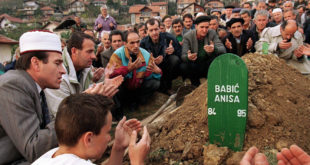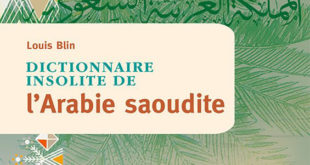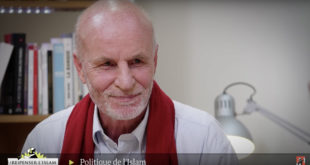
To Madame Audrey Azoulay,
Director-General of UNESCO
Paris, February 21 2022
Subject : Letter-appeal from Azerbaijanis from Armenia, members of the Azerbaijani diaspora in France, in Europe and Azerbaijan’s supporters to Madame Audrey Azoulay, Director-General of UNESCO.
Y/Ref.: UNESCO missions to Azerbaijan and Armenia.
J/d: Non-exhaustive list of Azerbaijani cultural heritage in Armenia (in alphabetical order).
ASP: ZS (CF/E-1479)
FOLLOW-UP LETTER n°1L 026 909 5190 7
Anticipated by email to <dg@unesco.org>, <odg-dir@unesco.org>, <dg.secretariat@unesco.org>
Madame Director-General,
In our capacity as Azerbaijanis from Armenia, members of the Azerbaijani diaspora in France and Azerbaijan’s supporters, we have repeatedly appealed to UNESCO to inform you about the policy of annihilation perpetrated by Armenia against the heritage of the Azerbaijani people. As a result of a deliberate policy pursued by Armenia, the centuries-old cultural heritage of Azerbaijani people in the territory of Armenia is facing the threat of total destruction.
The annihilation of heritage perpetrated by Armenia was accompanied by a policy of ethnic cleansing against Azerbaijanis. As a result of the mass expulsions of Azerbaijanis from their native lands in present-day Armenia, which began in the early 20th century, there is no Azerbaijanis left in Armenia. During the last expulsions in 1987-1989 alone, more than 250,000 (two hundred fifty thousand) Azerbaijanis were expelled from their native lands and became refugees. 217 (two hundred seventeen) of them were brutally murdered in various circumstances.
Thus, by pursuing a policy of both ethnic purification (cleansing) and cultural annihilation, Armenia has deliberately erased all traces of Azerbaijanis, the historical and ancient native inhabitants (autochthones) of these territories, perpetrated plunder, destroyed, embezzled and changed the cultural heritage of the Azerbaijani people. At the same time, ancient Azerbaijani toponyms in these areas were replaced with Armenian ones.
We provided a number of precise facts in our earlier appeals to UNESCO. For example, along with other facts, we have emphasized that the Blue Mosque, the Gala Mosque, the Shah Abbas Mosque, the Tapabashi Mosque, the Zal Khan Mosque, the Sartib Khan Mosque, the Haji Novruzali Bey Mosque, the Damirbulagh Mosque, the Haji Jafar Bey Mosque, the Rajab Pasha Mosque, the Mohammad Sartib Khan Mosque, the Haji Inamverdi Mosque and more than 300 (three hundred) other mosques located in Armenia were deliberately destroyed, appropriated or used for other purposes in the early 20th century. Only the Damirbulagh Mosque functioned normally until 1988, but it has now been entirely demolished and replaced by a high-rise building.
Besides, more than 500 (five hundred) Azerbaijani cemeteries in Armenia, such as Aghadada, Ashaghi Shorja, Gullubulagh and Saral have been destroyed. The tomb of great Azerbaijani poet Ashig Alasgar, with the tombstone erected in his native village in the ancient Goycha district, was also destroyed.
We especially want to point out that such a large number of Azerbaijani mosques and cemeteries in present-day Armenia correspond to the demographic and ethnic situation of the country, which was once populated by absolute majority of indigenous Azerbaijanis.
At the beginning of the 20th century several tens of thousands of Azerbaijanis were systematically exterminated on the territory of the former Azerbaijani Khanates of Iravan and Nakhichevan, as well as in the region of Zangezour, by the Armenian Dashnaks (in particular the fatal general Andranik). These acts can only be qualified in law as genocide.
During the Soviet era, under the pretext of the repatriation of Armenians from abroad, the powers of the Armenian SSR obtained the forced transmigration (deportation) from Armenia of 100,000 (one hundred thousand) Azerbaijanis. However, the majority of so-called repatriates subsequently returned to their western countries of origin, while only a few Azerbaijanis were able to return to Armenia.
In addition to this, the powers of Soviet Armenia deliberately hindered the teaching of Armenian in the territories populated mainly by Azerbaijanis so as to subsequently obstruct their integration and thus promote their definitive departure from the country (Armenia).
At the end of the 1980s only 300 (three hundred) Azerbaijani families were left in Yerevan. Only one mosque, in addition to a public school, an official newspaper was operating there. Unfortunately, during the conflict period all these families were forced to flee their fireplaces, the mosque was destroyed and the public school together with official newspaper and was closed. The Azerbaijani department in the higher education system was closed long years before.
All these testify to a continuous and deliberate state policy of ethnic cleansing against the Azerbaijanis whatever the regime in Armenia.
In general, Armenia has deliberately destroyed thousands of cultural heritage sites of the Azerbaijani people on its territory. This is a clear example of the Armenia’s intolerance of the Azerbaijani people, as well as an insult to all humanity.
This is evidence of the fact that Armenia does not recognize any universal values. The fact that Armenia committed all these illegal acts and vandalism with impunity for decades sends a wrong signal to the world community. The world community should understand that such steps represent a state policy in Armenia and take steps against it. It is high time to act!
For this purpose, the existing tools of international law should be deployed. The deliberate destruction, distortion and appropriation of cultural sites are particularly a flagrant violation of international humanitarian law, especially, the 1949 Geneva Convention and the 1954 and 1970 UNESCO Conventions. The acts alleged against Armenia can only be qualified as war crimes and/ or crimes against humanity. The deliberate destruction of cultural heritage is also a matter of peace and security, as defined by UN Security Council Resolution 2347 adopted in 2017.
Madame Director-General,
Based on aforementioned facts, we requested that you send an expert group to Armenia to assess the current state of the centuries-old cultural and historical heritage of the Azerbaijani people. Unfortunately, Armenia has opposed such a mission in order to keep its insidious and illegal actions secret.
However, as a result of a video conference between the leaders of Azerbaijan, France, Armenia and the President of the European Council on 4 February 2022, agreement was reached that UNESCO missions would be sent to Azerbaijan and Armenia. This news inspired and prompted us to address you again.
We do hope that Armenia, which took this a commitment, does not hinder the realization of the UNESCO mission, and as a result of the objective report of this mission, the whole world will be made aware of the actions committed against the centuries-old heritage of the Azerbaijani people. Armenia finally should be held accountable for its actions.
You will find attached some documents in support of the content of this letter-appeal. We remain of course, at your entire disposal for any additional information or clarification that you deem useful.
Thanking you in advance for all the attention you will give to this letter-appeal, we ask you, Madam Director General, to receive the expression of our best regards.
Signed by
Zaur N. SadigBayli, Legal Officer, and other Azerbaijanis from Armenia, members of the Azerbaijani diaspora in France. Mourad Abuzarli, PhD candidate in physics,Shahla Aghalarova, former. FFL teacher, Kamala Gulmammadova, FFL teacher,Mr. & Mrs. Emil & Aytan Mirzayev(a), PhD candidate in economy, Aytan Mouradova, Cultural Advisor, Mehriban Ovchueva, jurist,Elnara Ramazanova, interpreter-translator, Gulia Ramazanova, interpreter-translator, Gunel Safarova PhD, associate researcher, consultant in management of exchanges,Shabnam Suleymanova, medias engineer,Nazrin Shirinova, Project manager, and other members of the Azerbaijani diaspora in France.
Serge B., founder of the TT “Le Cadran”, Maxime Gauin, historian, specialist in the Armenian question, Martin O’Ryan, entrepreneur, and other Azerbaijan’s supporters.
« AKS » – Coordinating Council of the Azerbaijani Diaspora in France, “Alim” – Scientific Association, « ADFA », association of dialog France-Azerbaijan, “Le Cadran” (The dial) – think tank, “Garabagh” – Private Azerbaijani school, “Ulduz” – Cultural Association, Aynur Bashirova, PhD candidate in international relations (Belgium),Matin Hassanov, economist of development (Belgium),Emin Aliyev, senior project management,Farid Aliyev, financial expert (Belgium), Mr. & Mrs. Antoine & Nigar Liagre, analyst (Switzerland),Mr & Mrs Simon & Maria Martignioli, (Switzerland), and other members of the Azerbaijani diaspora in Europe,
to Madame Audrey Azoulay, Director-General of UNESCO
7, place Fontenoy
75007 Paris
Copy to H.E. Mr. Elman Abdullyaev,Ambassador, Permanent Delegate of the Republic of Azerbaijan to UNESCOPermanent Delegation of Azerbaijan to UNESCO1, rue Miollis 75015 Paris
N.B. : FFL means French as foreign language. TT – think tank. Electronic signature and transmission.
_______________________________________________
Non-exhaustive list of Azerbaijani cultural heritage in Armenia:
1. Iravan Bazaar (market).
2. Afshar Caravanserai (in Iravan).
3. Georgian Caravanserai (in Iravan).
4. Salim Caravanserai (Daralataz town).
5. Sussuz Caravanserai (in Iravan).
6. Talin Caravanserai (Talin village).
7. Zarab Khan Caravanserai (in Iravan).
8. Aghadada Cemetery (in Iravan).
9. Aghbulagh cemetery (Aghbulagh village, Geytcha district).
10. Ashaghi Shorja Cemetery.
11. Gullubulagh cemetery (Aghbaba village).
12. Saral cemetery (Boyuk Garakilsa village, Alexandropol district).
13. Urud cemetery (Urud village, Zangezour).
14. Iravan Fortress Complex.
15. Okhchu Fortress (Kaphan district).
16. Sardarabad Fortress (in Iravan).
17. Shaki Fortress (Garakilsa locality, Zangezour).
18. Urud Fortress (Urud village, Zangezour).
19. Garden of the Khan of Iravan.
20. Hammam (Baths) of Haji Jafar Bey (in Iravan).
21. Hammam (Baths) of Hassanli Bey (in Iravan).
22. Bugakar shrine house (Bugakar village, Meghri, Zangezour district).
23. House of Panah Khan Makinskiy (in Iravan).
24. Mausoleum of Amir Saad (Zangibasar quarter of Iravan).
25. Pir Huseyn Mausoleum (Jafarabad village).
26. Akhi Tavakkul monument (Alayaz village, Sharour-Daralaghez district).
27. Tomb monument of Ashigh Alaskar (Aghkilsa village, Geytcha district).
28. Mosque (Shakh) Abbas Mirza of Iravan.
29. Aghbulagh Mosque (Aghbulagh village, Geytcha district).
30. Argaz Mosque (Argaz village, Sharour-Daralaghez district).
31. Blue Mosque of Iravan.32. Damirbulagh Mosque (in Iravan).
33. Gala Mosque (in Iravan).
34. Haji Imamverdi Mosque (in Iravan).
35. Haji Jafar Bey Mosque (in Iravan).
36. Haji Nasrulla Bey Mosque (in Iravan).
37. Haji Novruzali Bey Mosque of Iravan.
38. Khudabanda Mosque (in Iravan).
39. Rajab Pasha Mosque of Iravan.
40. Mohammad Sartib Khan Mosque (in Iravan).
41. Sardar Mosque (in Iravan).
42. Shukurbayli Mosque (in Iravan).
43. Tapabashi Mosque (in Iravan).
44. Zal Kahn Mosque in Iravan.
45. Sardar Palace (Khan’s Palace) of Iravan.
46. Urud Bridge (Urud village, Zangezour).
47. Mongol burial (at Iravan).
48. Ram statue (Bash Abaran & Camishli villages of Iravan district).
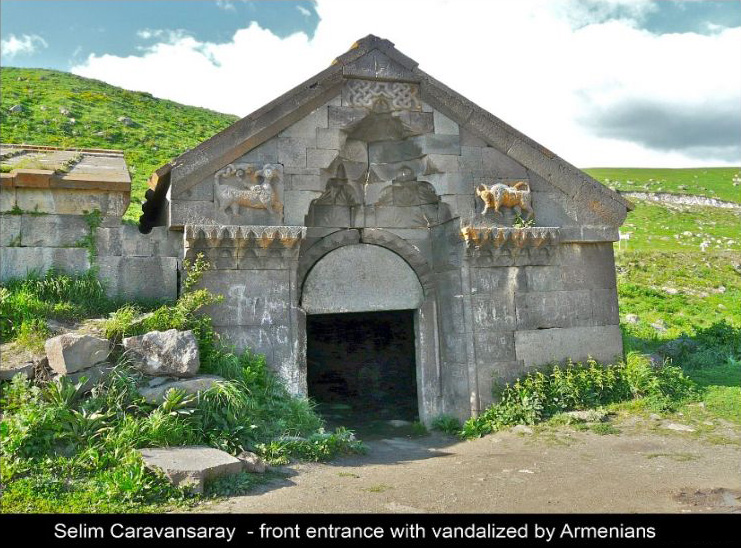

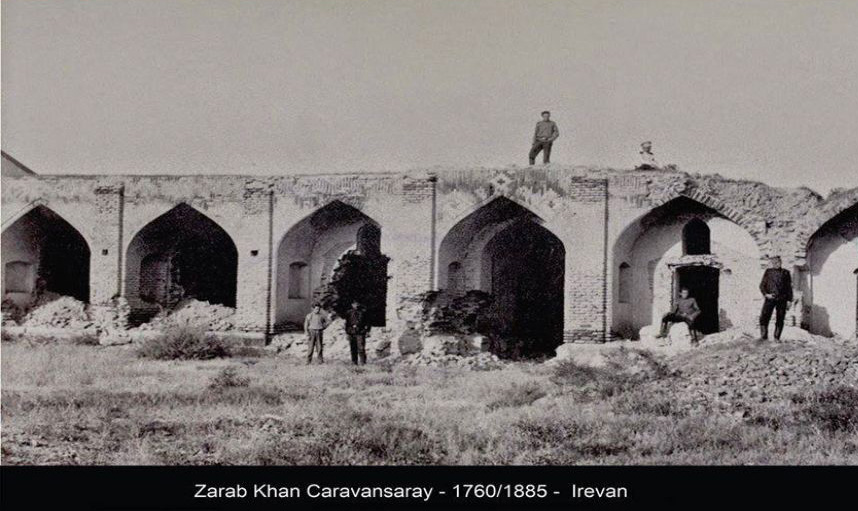





 Musulmans en France L'actualité des musulmanes et musulmans en France
Musulmans en France L'actualité des musulmanes et musulmans en France
